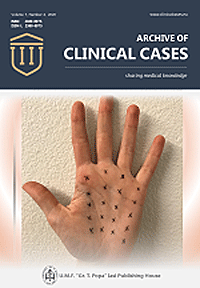Lobar pneumonia
Pneumonia is an acute exudative inflammation secondary to airborne infection with bacteria, viruses or mycoplasma.
Depending on the extent of lesions, pneumonia can be :
- lobular (a lobe segment is affected)
- lobar (an entire lobe is affected)
- bronchopneumonia (affects bronchioles and adjacent alveoli)
- interstitial (inflammation affects the interstitial tissue, mainly the alveolar walls)
There are two main types of acute bacterial pneumonia : bronchopneumonia (with lobular topography) and lobar pneumonia (lobar topography).

Figure 1 : Lobar pneumonia, gray hepatization
Lobar pneumonia is an acute exudative inflammation of an entire pulmonary lobe, produced in 95 % of cases by Streptococcus pneumoniae (pneumococci).
If not treated, lobar pneumonia evolves in four stages. Common to all stages is the enlargement of the affected lobe with loss of it's spongy appearance.
- In the first stage, congestion (day 1 - 2), the affected lung parenchyma is partially consolidated, and red-purple, partially aerated. Microscopy: alveolar lumen contains serous exudate, bacteria and rare leucocytes.
- In the second stage, red hepatization (day 3 - 4), the pulmonary lobe appears consolidate, red-brown, dry, firm, with a liver-like consistency (hepar, gr. - liver). The cut surface is dry, rough. Microscopy : the characteristic aspect of this stage is determined by the accumulation in the alveolar spaces of an exudate rich in fibrin (mainly), with bacteria, leucocytes, and erythrocytes. Alveolar walls are thickened due to capillary congestion and edema.
- The third stage, gray hepatization (day 5 - 7), the affected lobe has a liver-like consistency, with uniform gray colour (Figure 1). On the cut surface, a grayish purulent liquid drains. It is because alveolar lumens are filled with leukocytic (suppurative) exudate (neutrophils and macrophages, in order to remove the fibrin) (leukos, gr. - white). Capillary congestion and edema are still present, therefore alveolar walls are thick. (Figures 2 and 3)
- The resolution stage begins on day 8 and continues for 3 weeks (uncomplicated cases), while the exudate within the alveolar spaces will be drained through lymphatics and airways ("productive" cough) with gradually aeration of the affected segment.

Figure 2 : Lobar pneumonia (3rd phase) : leukocytic alveolitis. (H&E, ob. x20)

Figure 3 : Lobar pneumonia (3rd phase) : leukocytic alveolitis. (H&E, ob. x20)

